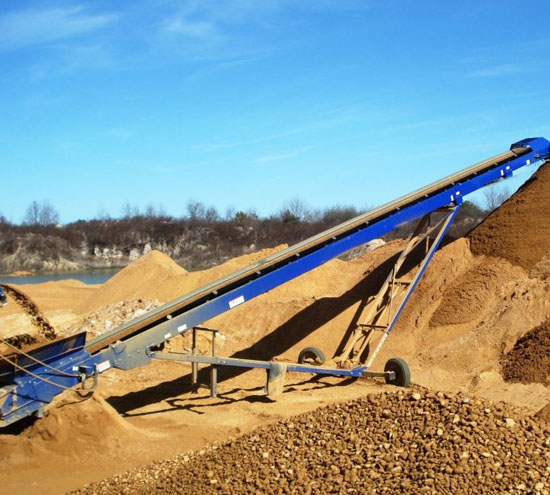A well-designed radial stacker conveyor can bring efficiency and flexibility to your aggregate stacking process, while reducing your material handling costs. Is it worth the investment? We take a closer look at the costs of radial stacker crane conveyors.
Why choose a radial stacker?
Radial stacker conveyors offer an effective solution to a common stacking challenge: while stacking aggregates higher allows you to make better use of the space available, taller stackers also make it more difficult to work efficiently and safely, thus limiting productivity and potential revenue.
Radial stacker conveyors lift your aggregates up to the discharge point 40 feet above the stack, while also rotating to store material in a higher and wider arc. This allows you to stack more material in the space without having to reposition the equipment.
This can help to achieve:
Higher safety
Less material handling costs
Lower fuel and labour overheads
Reduced dust and waste
Increased profitability
With slopes of up to 20° and lengths of 150 feet or more, radial stackers can move some materials at speeds of up to 1,200 tonnes per hour (TPH) and can be built to handle a variety of common aggregates, including
Quarries
sand and gravel
Mining overburden
Frac sand
Salt and fly ash
Radial stackers can also be designed to
Telescopic: allowing the discharge head to be moved further from the loading point, increasing capacity by allowing larger piles to be stacked.
Portable: lighter weight construction for smaller portable units designed to be moved between temporary locations, such as road camps or wellhead supply points.
Portable Radial Stacking Conveyor
Elements of the radial stacker conveyor
The steeply inclined conveyor of a radial stacker is immediately recognisable in any location or yard, but there are several key components to any radial stacker system:
Assembly truss - the frame that supports the conveyor and the material load.
Radial landing gear - the moveable component that allows the stacker to rotate.
Conveyor Belt - designed according to the nature and characteristics of the material being handled.
Head - discharge point at the end of the conveyor
Tail - the point at which the material is loaded onto the conveyor
Drive unit - motor and reducer mounted in the head and connected to the discharge pulley
Cost drivers for radial stacker cranes
Radial stacker crane conveyors are complex, customised machines. The overall cost of a radial stacker crane is determined by several key cost drivers:
TPH - the tonnage per hour you need the stacker crane to handle
Elevation - the maximum height your equipment needs to be stacked to
Width - the width of the belt required
Material properties - the weight and density of the aggregates
Material properties - the specific properties of the material to be considered
Portability - do you need to be able to move your equipment to a new site?
Costs and options
Let's start with the conveyor belt itself and see how these considerations drive decisions about stacker design.
The conveyor belt
The maximum TPH your stacker crane needs to handle will determine the width of your stacker crane's conveyor belt and the speed at which it needs to run. Other key attributes in determining the speed and width of the conveyor belt include
The weight and density of the aggregates
Material sharpness, (see gypsum), particle size and cohesiveness
Moisture and dust levels
Conveyor belt grooving for efficient transport of different weights of material
Belts can be 24-60 inches wide and, depending on your material, can be of steel belt construction or multi-layer construction to withstand maximum load levels during loading.
Structure
The most important of these is the assembled frame that supports the conveyor system and its associated drives, reducers and idlers. The actual size of the structure is determined by the height that the radial stacker needs to serve, although this may be limited by the maximum gradient at which a given aggregate can be efficiently moved upwards by the available drivers.
Conveyor structures can measure anywhere from 30-150 feet or longer, allowing discharge heights of up to 40 feet and elevation ratings of 18-20°.

 ZOOMRY
ZOOMRY

